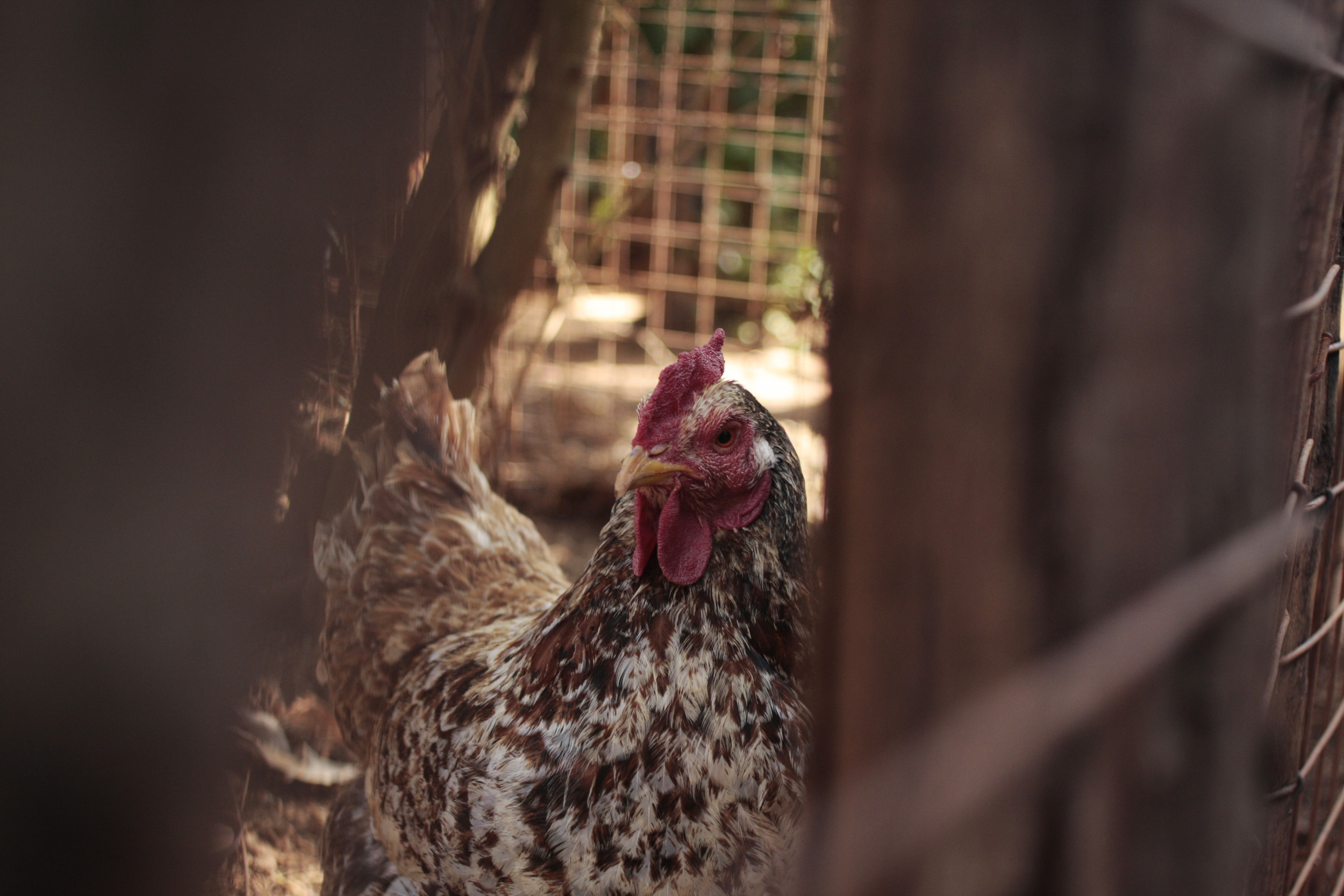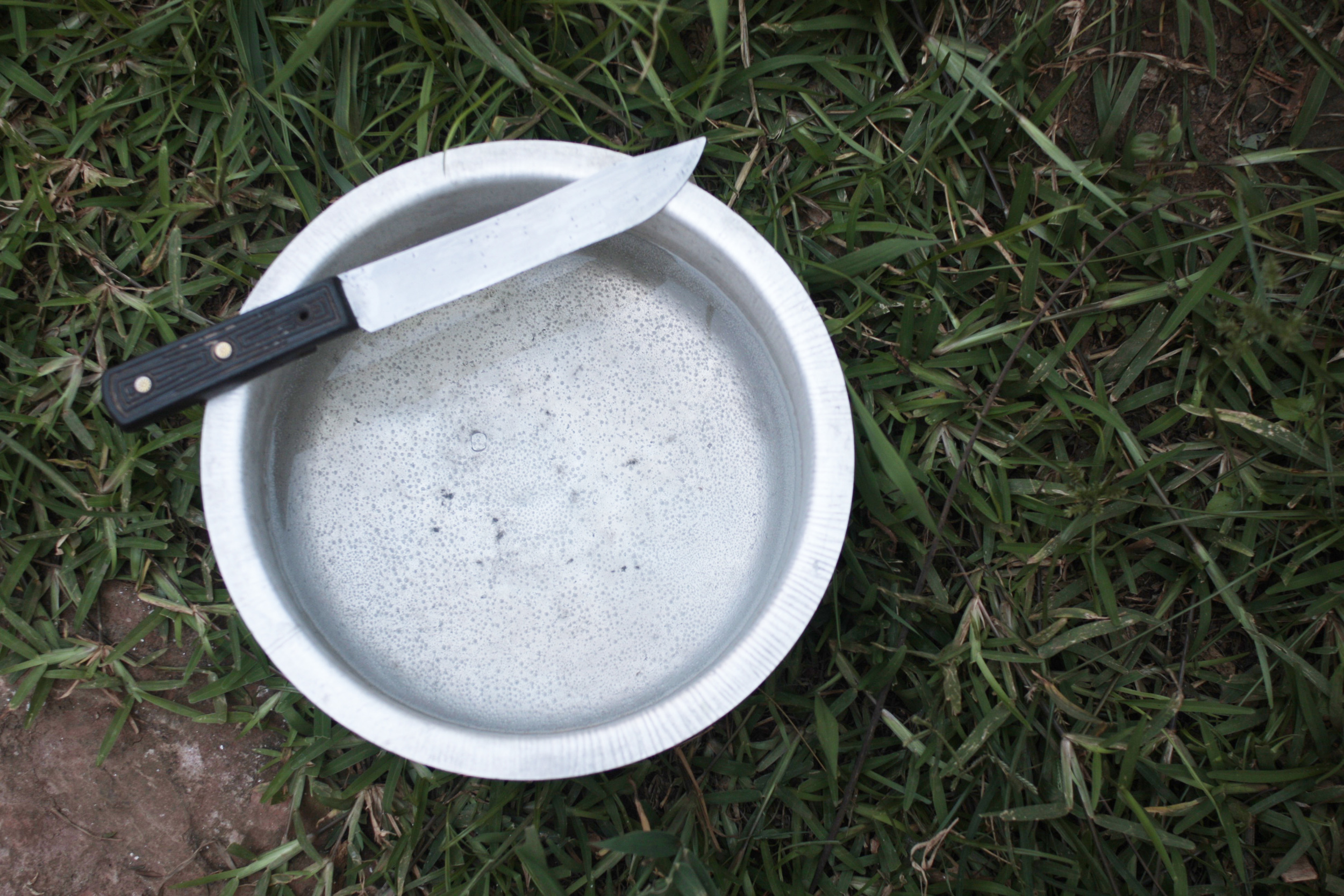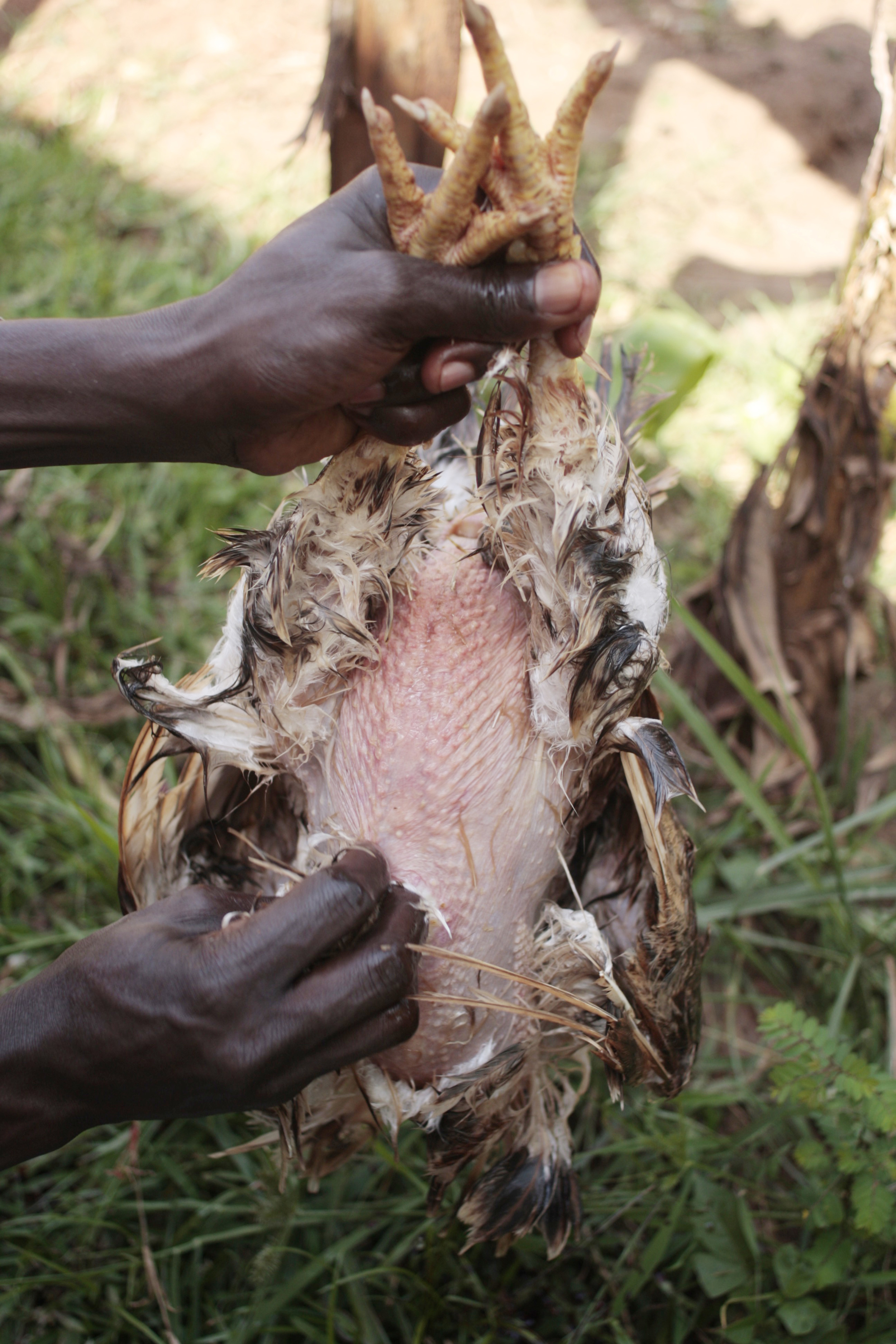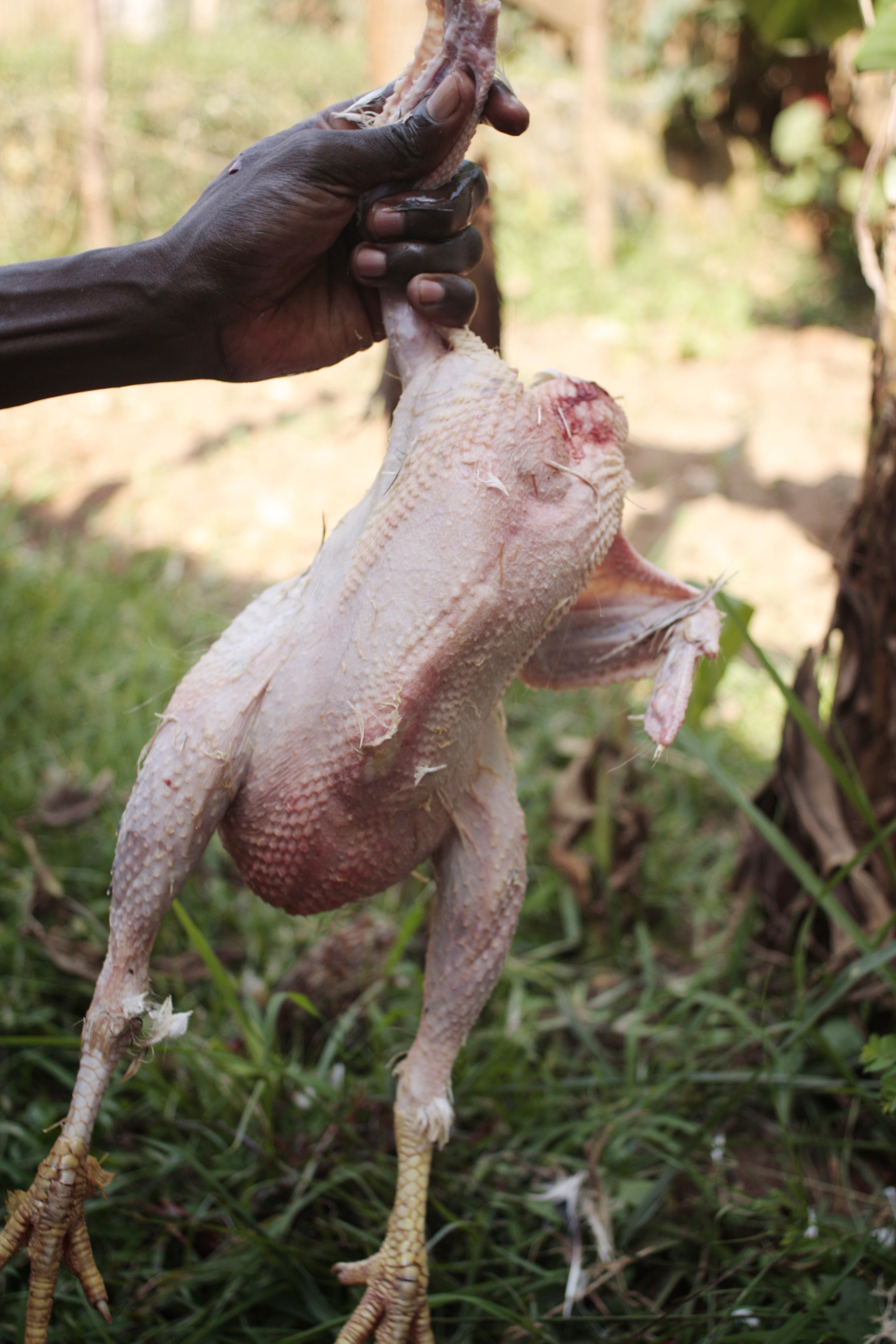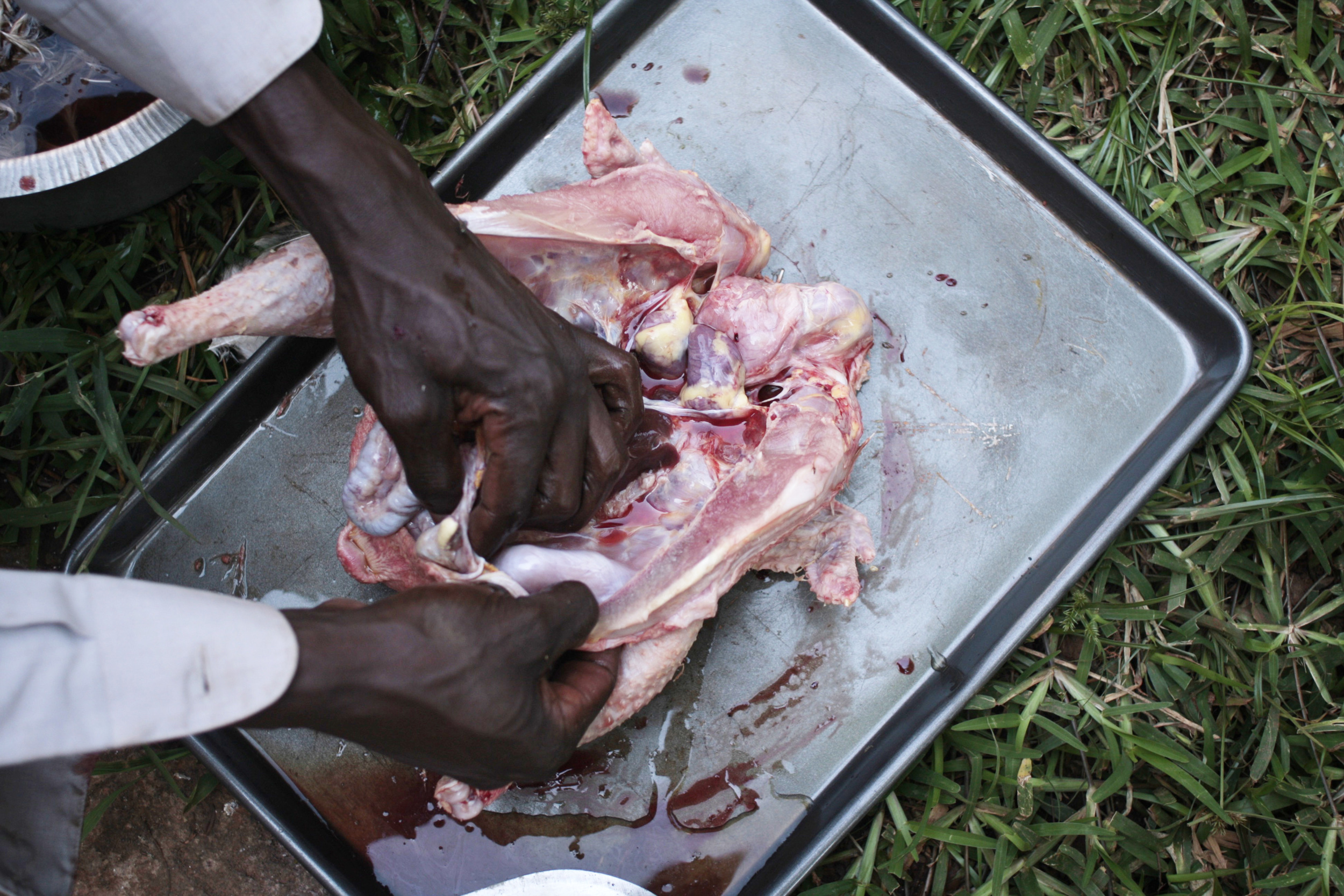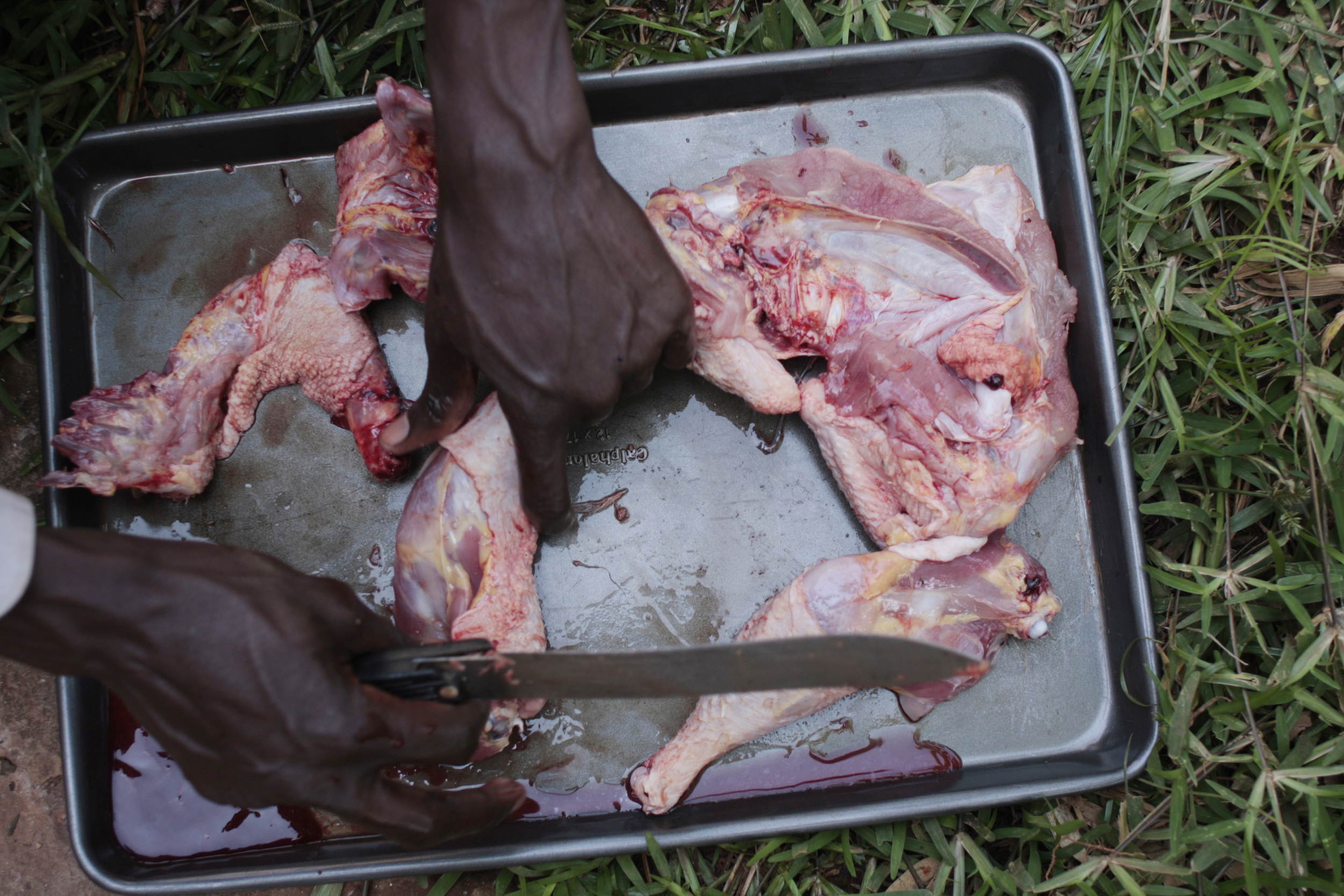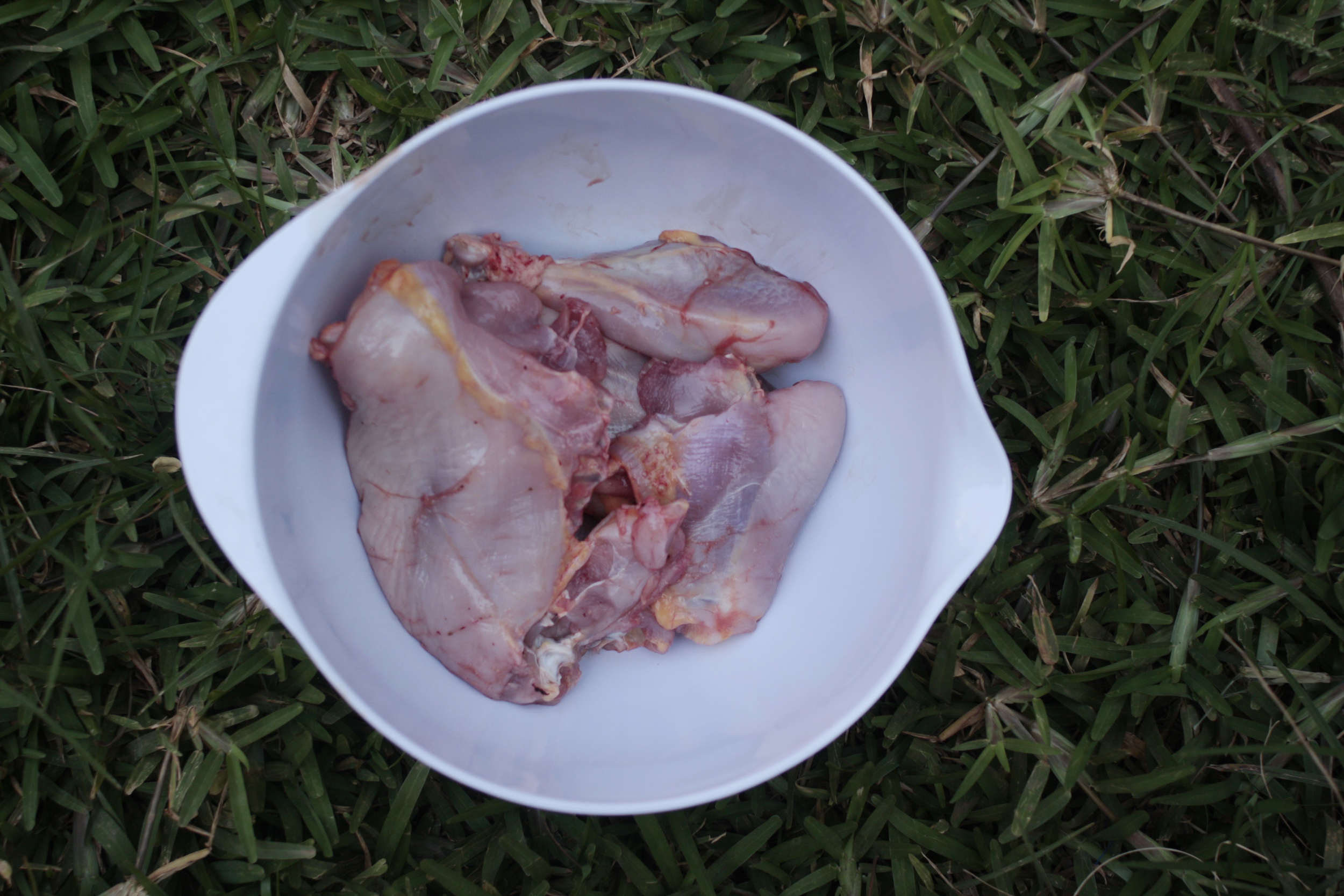Our hens are getting old. They are no longer laying eggs and therefore have become freeloaders, living off our food without giving anything in return. You know what that means: time to dine.
I had never seen the process of turning a live chicken into chicken on my plate, so I asked Kagwa, our guard, to show me how it's done. The process didn't take long - it simply included the cutting of a neck, dunking the chicken in hot water, plucking the feathers, and gutting the insides. Sure, it's not a pretty sight, but we should all know where our food comes from and what it takes to put a meal on our table. This is eating local at its best. My plate included meat from a chicken I raised myself; that is, until I actually tried to eat the thing and it was too tough to chew. Apparently, that old hen was just a little too old.
